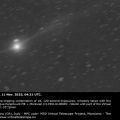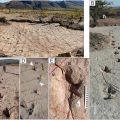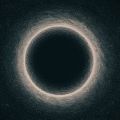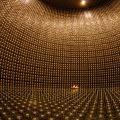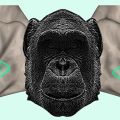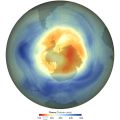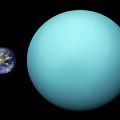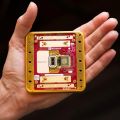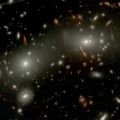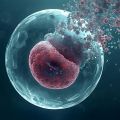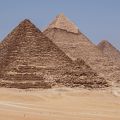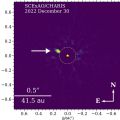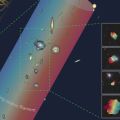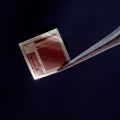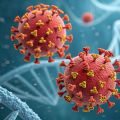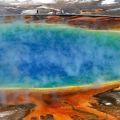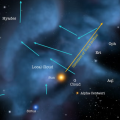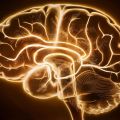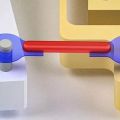Prix Gregori Aminoff - Définition
Source: Wikipédia sous licence CC-BY-SA 3.0.
La liste des auteurs de cet article est disponible ici.
La liste des auteurs de cet article est disponible ici.
Le prix Gregori Aminoff est un prix international créé en 1979 et délivré par l'Académie royale des sciences de Suède dans le domaine de la crystallographie. Il récompense « une contribution documentée et individuelle dans le domaine de la cristallographie, comprenant les domaines de la dynamique de cristallisation et de dissolution des structures cristallines. On privilégiera les travaux montrant une certaine élégance dans l'approche du problème. »
Gregori Aminoff (1883-1947) était un artiste et un scientifique suédois, devenu professeur de minéralogie au Muséum suédois d'histoire naturelle en 1923. Le prix fut créé à la demande de sa veuve, Birgit Broomé-Aminoff. Il peut être partagé entre plusieurs lauréats.
| Year | Name | Citation |
|---|---|---|
| 1979 | Paul Peter Ewald (United States) | « pour ses contributions fondamentales au développement de la science de cristallographie. » |
| 1980 | (Prix non attribué) | |
| 1981 | Charles Frank (United Kingdom) | "For your fundamental contributions to the development of the science of crystallography." |
| 1982 | Gunnar Hägg (Sweden) | "For his pioneering application of x-ray crystallography in inorganic chemistry." |
| 1983 | J. M. Robertson (United Kingdom) | "For your fundamental contributions to the development of the science of crystallography." |
| 1984 | David Harker (United States) | "For your fundamental contributions to the development of methods in X-ray crystallography." |
| 1985 | André Guinier (France) | "For your fundamental experimental and theoretical studies of the dispersion of X-rays with application to the study of structures of condensed systems." |
| 1986 | Erwin Félix Bertaut (France) | "Pour vos ouvrages eminents en cristallographie théorique et expérimentale, en particulier concernant les structures magnétiques." |
| 1987 | Otto Kratky (Austria) | "Für die Entwicklung der Kleinwinkelmethode bei Röntgen Studien der Struktur von Makromolekülen." |
| 1988 | Isabella L. Karle (United States) | "For her eminent crystallographic investigations of complicated natural products." |
| 1989 | Arne Magnéli (Sweden) | "For his epoch-making crystallographic studies of the building principles oxide compounds, which decisively have changed the view of the relations between stoichiometry and structure in inorganic chemistry." |
| 1990 | Jack Dunitz (Switzerland) | "For your eminent way of using structure analysis as a tool for studying different chemical problems." |
| 1991 | David Phillips (United Kingdom) | "For his fundamental results on the catalytic mechanism of enzymes." |
| 1992 | Michael M. Woolfson (United Kingdom) | "For your development of direct methods for statistical phase determination of chrystal structures." |
| 1993 | Clifford G. Shull (United States) | "For your development and application of neutron diffraction methods for studies of atomic and magnetic structures of solids." |
| 1994 | Michael G. Rossmann (United States) | "For your fundamental methodological work on the utilization of non-crystallographic symmetry, with its especially important applications within protein and virus crystallography." |
| 1995 | Hugo M. Rietveld (Netherlands) | "In recognition of his development of profile refinement methods for the analysis of powder diffraction data." |
| 1996 | Philip Coppens (United States) | "In recognition of your outstanding methodological and structure chemical achievements in Crystallography, especially the studies of electrone distribution in different types of chemical bonds." |
| 1997 | Wayne A. Hendrickson (United States) | "For your contributions to phase angle determination of macromolecular crystals using anomalous dispersion and measurements at multiple wavelengths." |
| 1998 | Pietro Marten De Wolff (Netherlands), Aloysio Janner (Netherlands), Ted Janssen (Netherlands) | All: "For your contributions to the theory and practise of modulated structure refinements." |
| 1999 | Richard Henderson (United Kingdom) , Nigel Unwin (United Kingdom) | Both: "For your development of methods for structure determination of biological macromolecules using electron diffraction." |
| 2000 | Dan Shechtman (Israel) | "For your discovery of quasicrystals." |
| 2001 | Kenneth C. Holmes (Germany) | "For his pioneering development of methods to study biological macromolecules, in particular muscle proteins, by synchroton radiation." |
| 2002 | Leslie Leiserowitz (Israel), Meir Lahav (Israel) | Both: "for your fundamental studies of crystal growth and application to separation of enantiomers and for your studies of surface structures by synchrotron radiation" |
| 2003 | Axel Brunger (United States), T. Alwyn Jones (Sweden) | Brünger: "for his development of refinement techniques for macromolecules". Jones: "for his pioneering development of methods to interpret electron density maps and to build models of biological macromolecules with the aid of computer graphics" |
| 2004 | (No prize awarded) | |
| 2005 | Ho-Kwang Mao (United States) | "for his pioneering research of solid materials at ultrahigh pressures and temperatures" |
| 2006 | Stephen Harrison, Harvard University and David Stuart, Oxford University | "for their remarkable contributions in virus crystallography" |
| 2007 | Sumio Iijima | "for his structural studies of carbon nanotubes" |
| 2008 | Hans Eklund | "for his crystallographic studies of ribonucleotide reductase" |
| 2009 | George M. Sheldrick et Gérard Bricogne | "for his developments on the division of structure chemical" |
